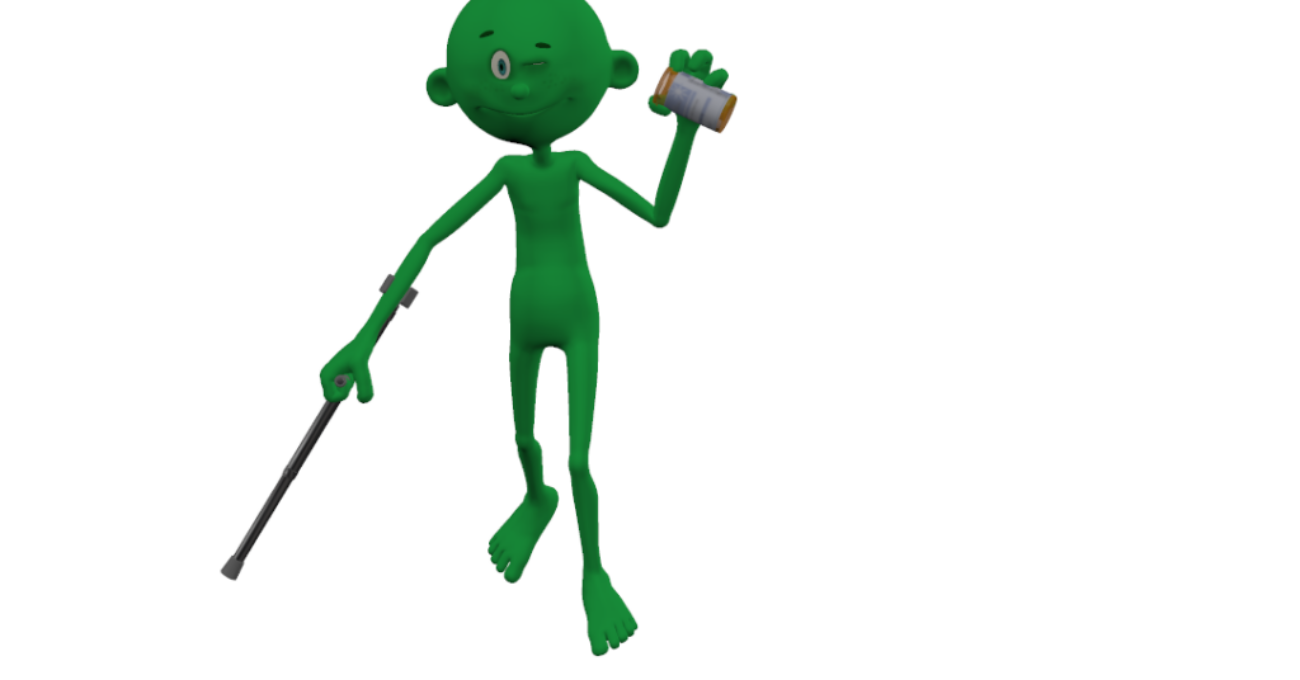How can that be?
Things that don’t add up: the puzzling challenges of placebos
Estimated Reading Time: 3 min, 59 sec
As noted last blog, there is mounting evidence that placebos seem to defy traditional reasoning by somehow producing meaningful results. In their systematic review, Hurst et al. (2020) found a small to moderate (around 5%) placebo benefit for sport performance. Given that even a minor effect can mean sporting success, any such effects should not be discounted and deserve further attention.
Many researchers have figured out that there are clear neurophysiological pathways that underpin the observed placebo effects (e.g. Wager & Atlas, 2015) – so it is not just in peoples’ heads! A neat example came from the work of Levine et al. (1978). They showed that a placebo analgesic that had successfully reduced pain was then blocked by injecting an opiate antagonist. This showed that the placebo analgesic effect was likely using the same pathways for pain reduction as a real analgesic – otherwise the antagonist would have had no effect. Further work (Eippert et al., 2009) has shown that placebo analgesics appear to act at the spinal cord level in modulating nerve transmission. I can’t even pretend to understand the neurophysiological basis for placebos – brain imaging studies seem to show that the suggestion of a ‘reward’ excites neurons, neural pathways and areas of the brain to prepare for that reward (Enck et al., 2008).
Beedie et al. (2018) speculate that placebos act through pathways that will often follow psychosocial and contextual cues that the users have picked up on, either overtly or inadvertently. For example, treatments from well-respected experts are often more successful that those from novice practitioners. Intravenous placebos will be more potent than oral placebos (Burke et al., 2019), elaborate equipment and technical calibration procedures will have better outcomes than low-tech options, treatments with seemingly logical explanations for their mechanisms (how often do we hear those?) will have better success rates, and (how’s this?) the placebo effect is stronger if the individual believes they are receiving a banned substance (for example steroids or erthyropoietin). Burke et al. (2019) categorise these as the ‘external contexts’ that individuals are ‘fed’ or pick up on. They suggest that these cues interact uniquely with the individual’s ‘internal contexts’ (their history, memories, experiences and expectations).

The thing is that responsiveness to placebo appears to be highly variable, which to me makes them less great. Research has shown that personality and gender can influence placebo responses (Vambheim & Flaten, 2017), but Beedie et al. (2015) claim that psychosocial contexts and cues will have a greater influence. One can surmise from research that there are two key elements to individual placebo responsiveness; belief and expectations. An individual needs to trust the person, organisation or device offering the treatment. They need to believe that it will work and they need to have expectations of what difference it will make. In that vein, Hurst et al. (2017) found that individuals who were intending to use supplements were more responsive to placebos – so intention was also a key consideration.
I guess we need to acknowledge here, that anyone who volunteers for a study/intervention/trial will have some expectations of a beneficial outcome, and the reputation of an organisation will probably influence their expectations, as will the individual(s) conducting the trial. As we think this through, we can question how much we can remove the placebo effect from an exercise intervention study, because there are undoubtedly expectations with participation.
In this context, Lindheimer et al. (2020) suggest that we should consider the expectations of study participants with measures and scales that probe the direction and magnitude of expected changes. Do you think your blood pressure will increase or decrease over the 8-week programme? How much change are you expecting?
Beedie and Hettinga (2020) offer a couple of useful observations on placebos. They suggest that the more we can understand about placebos the better we will understand the mind-body connections that influence health and human performance. They also argue that any deeper understanding would help us remove the variability of placebo response from our programmes and treatments. I don’t know about you, but I’ve found a lot variability in responsiveness to my exercise interventions, be they health related, exercise rehabilitation or sport conditioning. Could it be that I’m not really convincing enough for the low responders? Am I getting the psychosocial contexts all wrong? Am I not enough ‘guru’ for them?
I see all of this leading us into ethical issues around placebos and our professional responsibilities when suggesting (‘selling’) a method or programme. Do we try to take advantage of the placebo phenomena or do we try to eliminate or minimise it from our practice? Seems to me that there are a lot of non-professionals out there who have happily built their business model on placebos.
For my 10 cents’ worth – I think there are elements that we can take from our growing knowledge of placebos and use them in our practice. I’m conflicted but think I’m OK with placebos being used acutely. They wouldn’t be my first option, but if someone gets short-term pain relief from a coloured cream, gets a boost for their 5km run from a drink that they think contains caffeine (or some other magic food additive), or jumps a little higher because they have some coloured tape on their calf muscles – I can handle that. But ethically and professionally, I’m not on board with the more chronic uses of placebos – weight loss substances, dietary regimes or devices, muscle building routines or supplements, or those expensive capsules that are supposedly protecting our articular cartilage. I don’t think that sort of placebo use is sustainable or ethical. Ultimately, these things just seem dishonest and disrespectful of our constantly developing knowledge and understanding of physical activity and exercise. You will have your own opinions – as you should, and must – but it seems to me that encouraging chronic placebo use is praying on the vulnerable, the wishful thinkers and shortcut seekers. I offer these thoughts as someone who enjoys total immunity to all strains of placebo.
Best, Phil
References
- Beedie, C., Foad, A. and Hurst, P. (2015) Capitalizing on the placebo component of treatments. Current Sports Medicine Reports 14 (4); 284–287.
- Beedie, C., Benedetti, F., Barbiani, D., et al.(2018) Consensus statement on placebo effects in sports and exercise: The need for conceptual clarity, methodological rigour, and the elucidation of neurobiological mechanisms, European Journal of Sport Science 18(10); 1383–1389.
- Beedie, C., Hettinga, F. (2020) Introduction to the special edition on the placebo effect in sport and exercise, European Journal of Sport Science 20(3); 277–278.
- Burke, M.J., Kaptchuk, T.J., Pascual-Leone, A.(2019) Challenges of Differential Placebo Effects in Contemporary Medicine: The Example of Brain Stimulation. Neurology Grand Rounds 85(1): 12 – 20.
- Eippert, F.,Finsterbusch, J., Bingel, U. et al. (2009) Direct Evidence for Spinal Cord Involvement in Placebo Analgesia. Science 326 (5951); 404.
- Enck, P., Benedetti, F., Schedlowski, M. (2008) New Insights into the Placebo and Nocebo Responses. Neuron 59; 195- 206
- Hurst, P., Foad, A., Coleman, D. et al.(2017) Athletes Intending to Use Sports Supplements Are More Likely to Respond to a Placebo. Medicine & Science in Sports & Exercise 49(9);1877–1883
- Hurst, P., Schipof-Godart, L., Szabo, A., et al.(2020) The Placebo and Nocebo effect on sports performance: A systematic review. European Journal of Sport Science 20:3, 279–292.
- Levine, J., Gordon, N., & Fields, H. (1978). The mechanism of placebo analgesia.
The Lancet 312(8091); 654–657 - Lindheimer, J.B., Szabo, A., Raglin, J.S., Beedie, C. et al. (2020) Reconceptualizing
the measurement of expectations to better understand placebo and nocebo effects in psychological responses to exercise, European Journal of Sport Science 20:3, 338–346 - Vambheim, S.M., Flaten, M.A.(2017) A systematic review of sex differences in the placebo and the nocebo effect. Journal of Pain Research 10; 1831–1839
- Wager, T. D., & Atlas, L. Y. (2015). The neuroscience of placebo effects: Connecting context, learning and health. Nature Reviews Neuroscience 16, 403–418.
